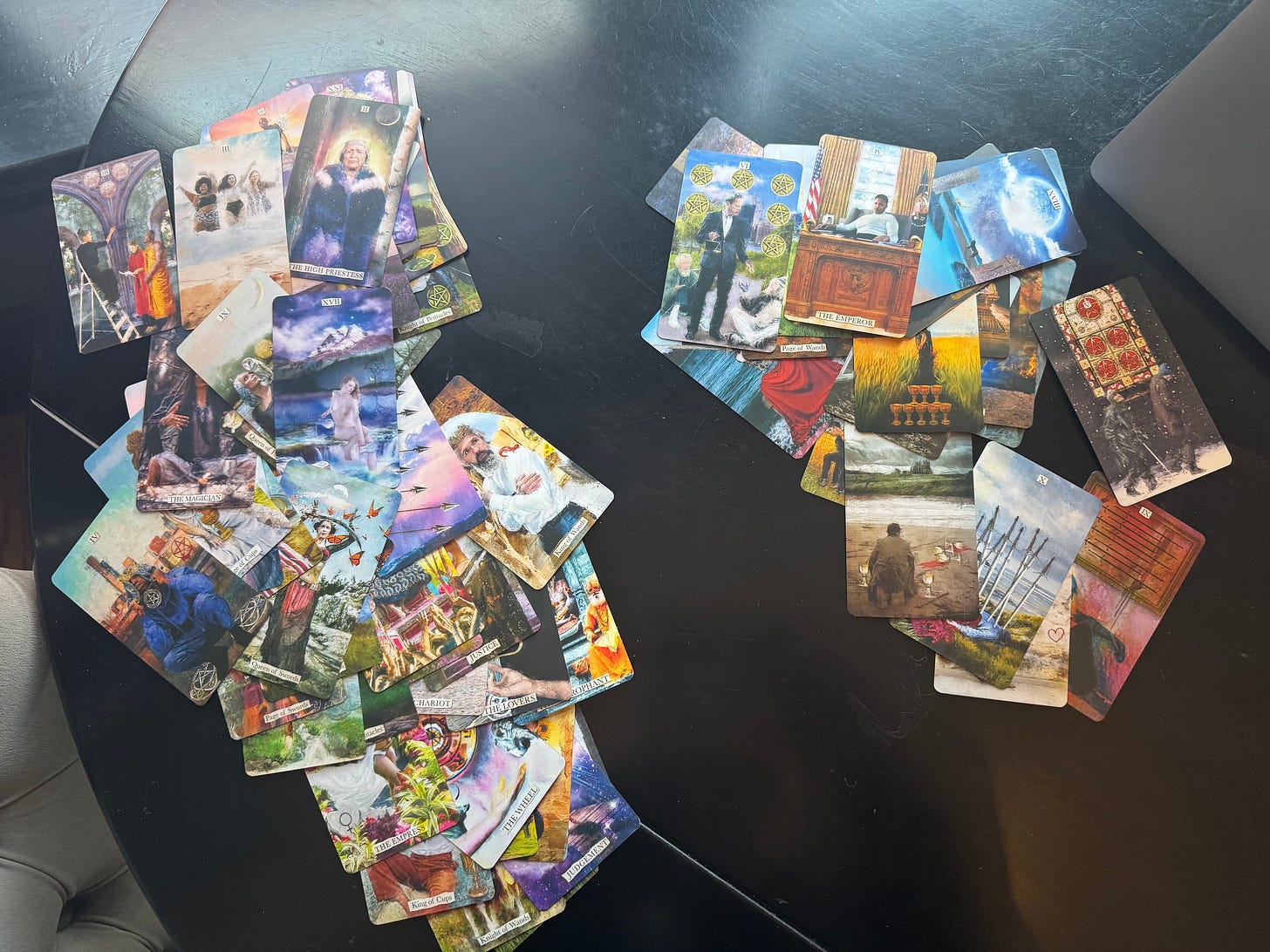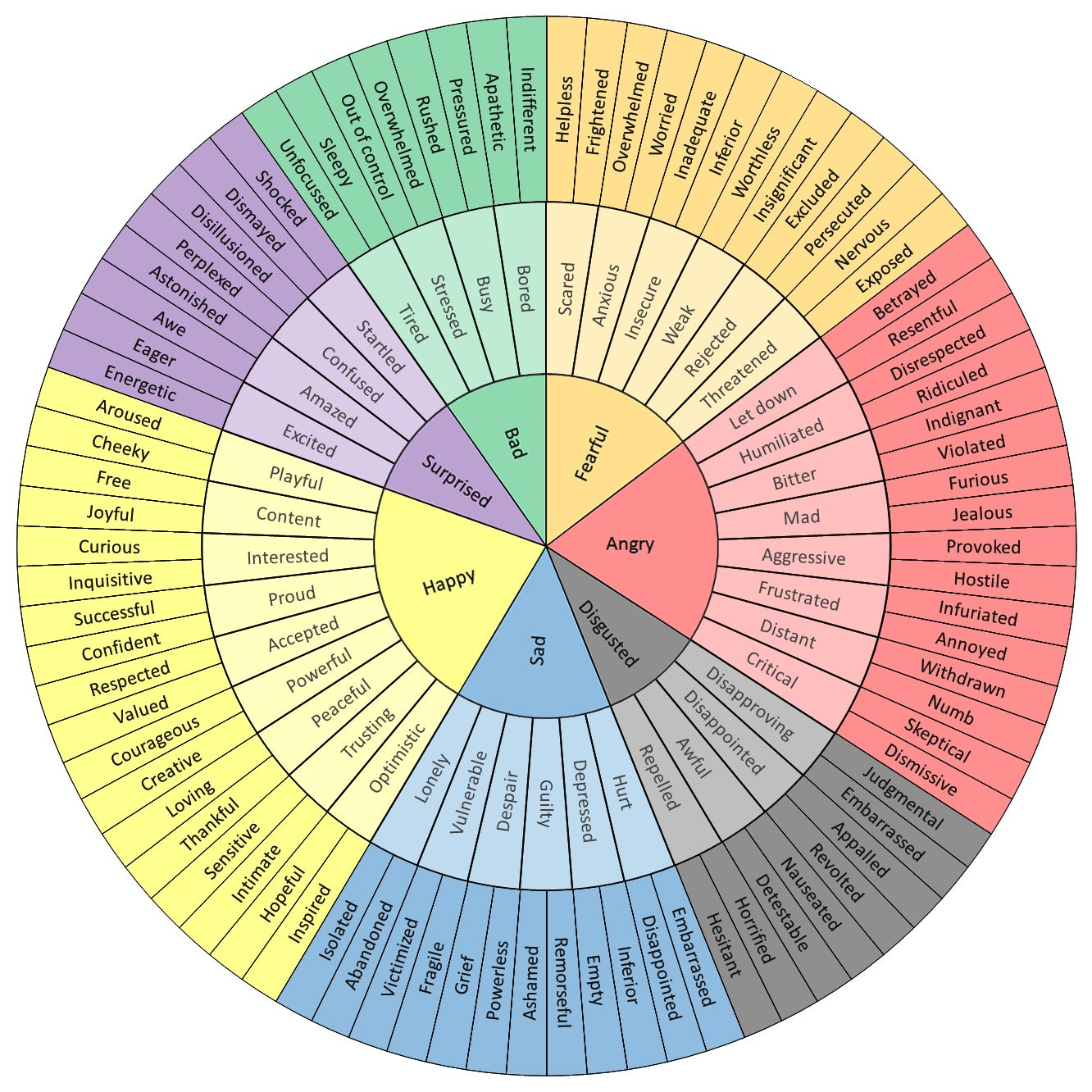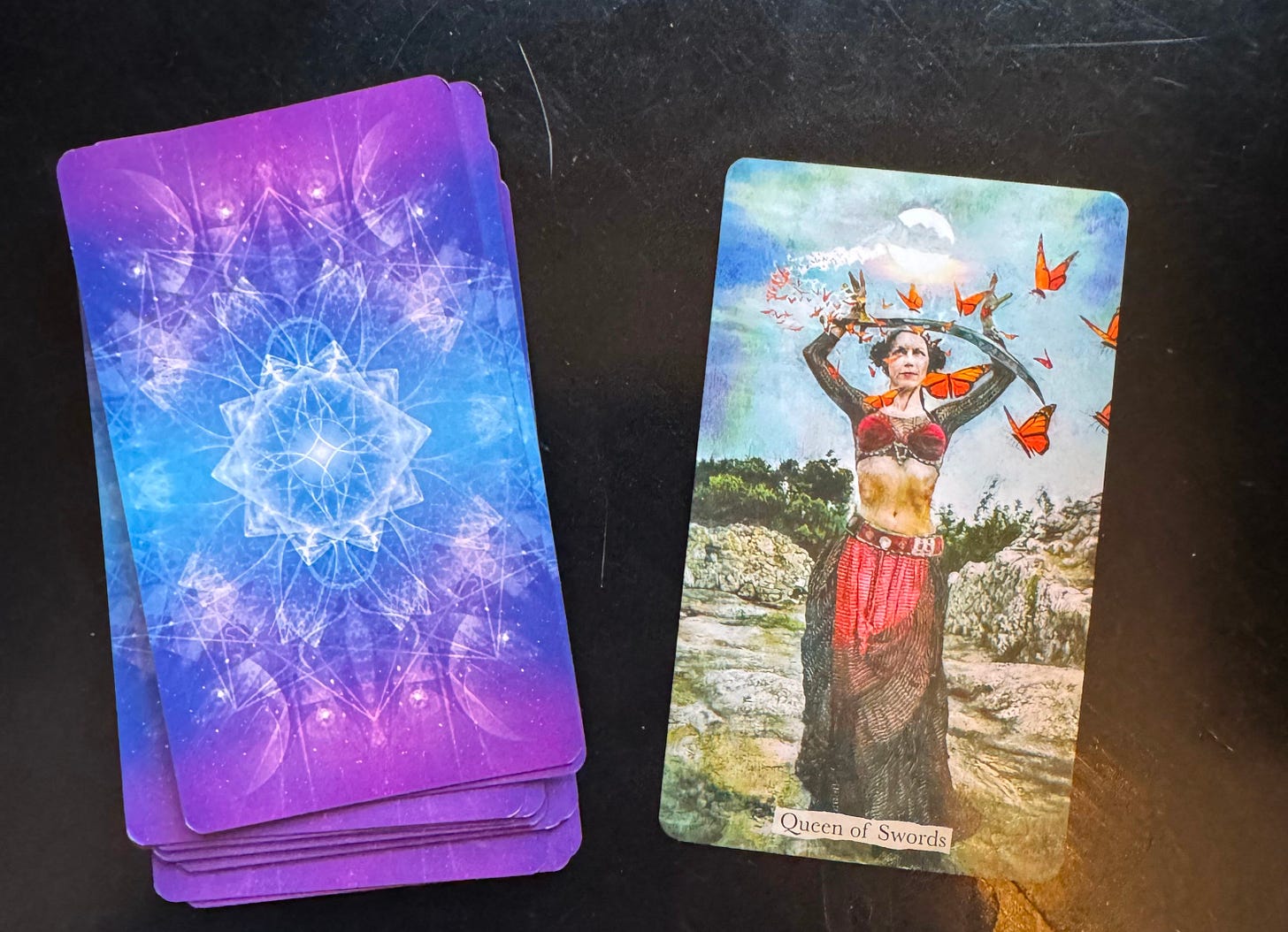Welcome to Day 1 of 30 Days of Tarot! I am so excited to be kicking this off today. This lesson will be the only one that is free to all, regardless of paid subscription, so if you are still on the fence about joining this course, this will give you an idea of what you can expect.
I’m Sarah and I’ll be your guide and teacher for the next 30 days.
Some housekeeping things:
I recommend you keep a journal or notebook to write daily thoughts and results as we work through this series. You will want to be able to refer back to previous exercises, as well as going forward, you’ll be able to see the progress you made and the connections you’re creating with the symbols in your cards.
You can use any tarot deck, however, in previous posts I have recommended that you use one with personified subjects (people, beings, animals) that show action or movement (or lack thereof) and your minor arcana cards should ideally have figures/personified subjects, not just ‘pip’ cards that show 8 wands or 3 swords on a background with nothing else.
We will also not address reversed cards right away. That will be part of the second half of this month, so for now if a card comes up reversed and you’re unsure about it, flip it upright and read it that way.
Tarot is a tool that we can use to explore everything within ourselves as well as the world around us.
It provides us with ways to consider alternative perceptions of events and to look at things or people from different angles we had not considered (or are not able to see on our own).
It also helps us access and grow our own intuition - but more importantly, to trust that intuition.
So let’s get started for Day 1.
Exercise
The first thing I want you to do is open up your deck and spend a minute or two looking at all the cards. You can fan them out, lay them all out on a table, however you want to do this.
Now, I want you to sort the cards into two groups:
Cards that have a positive feeling to them (they make you feel happy, hopeful, joyful, laughter, some other positively-oriented feeling)
Cards that have a negative feeling to them (they make you feel worry, sad, anger, hate, frustration, conflict or some other negatively-oriented feeling)
While you’re sorting, go with the first gut reaction you have to a card. Do not overthink this and do not try to decide ‘happy’ vs ‘sad.’
Whatever you feel first upon looking at the card is what you go with. There’s no right or wrong answer, and you will all get different results, especially depending on the deck you use.
Now that you’ve sorted your piles, you can further rank them from most positive to least positive and most negative to least negative. As you’re doing this, make a note of if you see certain suits (cups, swords, wands, pentacles/coins) show up more in one than the others. Also make a note of which colors show up more in one category or the other.
Again, go with your immediate reaction, trust your gut, do not apply logic or thinking to this. This is an intuition driven exercise. No thinking brains allowed.
*extra bonus: if you have time, you can further sort your groups into specific emotion groups, maybe even consider using the feeling wheel (below) to associate cards with specific emotions. Write these down in your journal or on a sheet of paper that you will keep handy.
Once you have gotten familiar with the emotional spectrum portrayed in your deck, shuffle your cards well.
Some tips on shuffling:
I prefer bridge/riffle shuffling to any other form. I feel it produces the most effective shuffle and reduces the probability of getting sequential cards that aren’t well shuffled.
You can use any style of shuffling that you like, but I’ve included a brief video here to explain a few. This is based on playing cards, but all of these techniques work and are valid for tarot:
I like to shuffle a new deck a minimum of nine times. I use a combination of bridge and hand over hand, then bridge again. That’s just the initial shuffle. Once your deck has been shuffled well the first time, you don’t need to do that every time.
Note: I usually do not read ‘jumping’ cards (cards that seem to jump out of the deck while overhand shuffling) while shuffling a new deck, and also usually don’t read them during readings if the cards are a bit combative in the shuffling process. You may find that some decks ‘resist’ shuffling, not kidding. This could lead to cards that jump out or catch on other cards.
Some people believe these jumping cards are signs or messages. I think it depends on the context. If you are a bad shuffler and your cards are catching on each other, the jumping cards are meaningless and your deck needs to be shuffled a different way.
Moving on…
With a well-shuffled deck, ask a yes or no question. (e.g. should I eat a ham sandwich for lunch today? Is my mom still mad at me for forgetting her birthday? Is the sky blue?) This can be a question you know the answer to or not. Doesn’t matter.
Cut the deck and choose the card on top of the pile that’s been cut. Flip it over and using your first impression is this a yes or no answer?
Repeat this for at least 2 other questions. Write down the questions in your journal and the results you got.
*extra extra bonus: with any of the answers you drew, did you get any other impressions from the answer card other than just yes or no? Make a note of that. Even if you feel like the impression was ‘out of nowhere’ or ‘irrelevant’ or ‘unconnected,’ you’d be surprised how much you are connected to a universal consciousness that’s giving you answers all the time and you may not realize it.
That’s it. Day 1 completed and you’ve successfully answered at least 3 questions using tarot!





